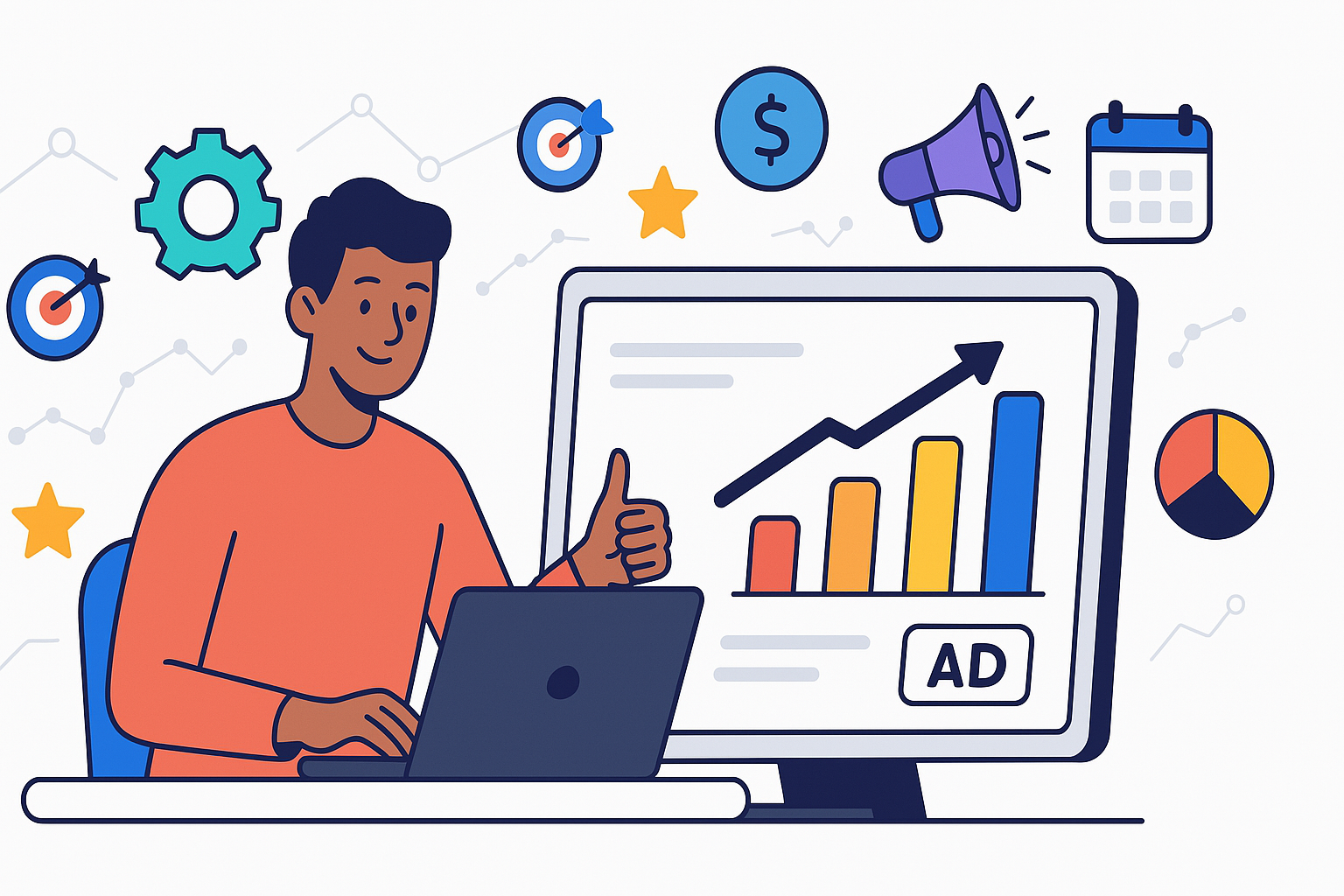Calculate Your Digital Marketing Investment
by Francisco Kraefft on 21 Nov, 2023
When we start working with a new customer, one common question is how much they should invest in Digital Marketing. Our answer is always the same: How much revenue do you expect to have? We can calculate the ad budget and expected income based on that simple question.
Believing that a mere $100 investment can yield a million dollars in sales is utterly unrealistic. Therefore, this straightforward approach establishes realistic expectations for our digital marketing campaigns.
Now, let's take a deep dive into two examples - one in ecommerce and one in lead generation - to explore how we can calculate the investment needed.
Consider that this strategy is for businesses starting their marketing strategies and focusing on lower-funnel strategies for quick sales.
Crunching the Numbers for an Ecommerce Investment
Click here for the Lead-Generation investment. ↓
Imagine Mark, the proud owner of a stylish dog clothing store located in the bustling city of New York. As winter approaches, Mark is determined to boost the sales of his luxurious dog cashmere sweaters. He plans to implement an innovative omnichannel shopping campaign strategy to achieve this. Specifically, Mark wants to highlight the exquisite Cashmere Dog Sweater, a fashionable piece priced at $200.
Mark's first step is to determine the amount he can allocate for marketing expenses for each item sold. Let's do some quick calculations - assuming he wants to maintain profitability, he can allocate up to a quarter of the item's price for marketing. In this case, that would amount to $50 per item sale.
Mark must achieve a minimum return on ad spend (ROAS) of 4 for the campaign to be profitable. This means that for every dollar invested in the campaign, he needs to generate four dollars in return.
As a digital marketing agency, we prioritize analyzing margins and costs rather than relying on vague figures. This approach allows us to confidently determine how much we can optimize campaigns and adjust settings to achieve desired results.
To answer the question, we determine the desired number of items Mark aims to sell in his campaign, which in this imaginary scenario is 20.
To determine the ad budget for his campaign, Mark needs to calculate the number of items he aims to sell multiplied by the maximum amount he can spend per item sale. In this particular scenario, he plans to sell 20 items and can allocate up to $50 for marketing expenses per item sold. Therefore, his ad budget for the campaign would amount to $1,000.
We closely monitor the results after investing $1,000 to kickstart the campaign. If the campaign meets the expected outcomes, it's time to double down on the strategy and allocate more budget to maximize exposure and capitalize on the number of searches for the product. If the campaign proves to be profitable, there's no reason to limit its potential by restricting the budget.
If the campaign fails to generate profitability and the ROAS falls below 4, we must promptly reassess our strategy and make the necessary adjustments to ensure its success.
A friendly reminder: the average return on ad spend (ROAS) can vary depending on the country and industry. However, as a general guideline, a ROAS of less than 200% is considered flawed, a ROAS of 200% - 400% is considered normal, and anything above 400% is considered exceptional for a campaign.
Customers often overlook the importance of considering these factors when setting prices for their products, but it is crucial to have profits!
If you are running a shopping campaign and want to know your current ROAS, please contact us; we will help you calculate it.
Let's explore the process for a lead-generation campaign
When it comes to lead-generation campaigns, things can get quite complex. There are many factors to consider, such as the customer's long-term value, the potential for upselling, and the percentage of sales rate. However, let's simplify it and break it down to its core elements.
As we embark on our journey with a lead-generation customer, we prefer to begin with simplicity and gradually introduce complexity as we gain a deeper understanding of the business.
Let's look at our agency as an example. Our primary objective is to acquire ten new customers every month, and we typically have an average ticket value of $5,000 and a sales rate of 20%. This means we successfully convert one customer for every five leads we receive.
Our clients hire our campaign services for at least four months. This timeframe allows us to work closely with our customers to establish goals, configure campaign settings, and continuously refine our strategies as needed. This approach ensures ample time to optimize our campaigns for maximum effectiveness.
Factors like churn rate, upselling potential, and current campaign scalability must be considered to understand the equation fully. However, for the sake of simplicity, let's focus on the initial four months of our services.
If our service is worth $5,000 per month and our customers remain with us for four months, we can expect a total revenue of $20,000. Let's assume that $3,000 will be our profit and $12,000 will be our costs to configure the campaign, leaving us with $5,000 for the acquisition cost. From the acquisition cost per customer, we can determine that our cost per lead should be one-fifth of that based on our 20% close rate; this translates to a cost of $1,000 per qualified lead in our campaigns.
Budget = Acquisition Cost per customer * Expected Amount of customer per month
Cost per lead for campaigns = Acquisition Cost per customer * Our Close Rate
In this example, we need to allocate a budget of $50,000 to acquire ten new customers each month.
Adding complexity to the lead generation campaign's budget allocation
As mentioned earlier, if we incorporate upselling strategies and anticipate that customers will continue to engage with our agency beyond the initial four months, the revenue per customer will increase, allowing us to allocate more funds for marketing with a higher acquisition cost.
While adding complexity to the formula and successfully achieving our customer acquisition cost, we will see greater profits in the long run. And even if we have yet to reach your cost per acquisition, we still have some flexibility to invest more in marketing efforts, considering this.
Furthermore, it's important to note as an example that an increase in the sales rate from 20% to 40% can have a significant impact by doubling the budget for the lead acquisition. This is precisely why lead-generation campaigns tend to be more challenging. It's crucial for marketing and sales to work together collaboratively to maximize revenue.
Unfortunately, many agencies focus solely on marketing and overlook the sales department, resulting in missed profits. If you're struggling to close sales, consider exploring how a CRM can boost your conversion rate.
If you already have your sales objectives and have calculated your investment, please contact us to start your campaigns.


